The Greater Los Angeles
Egg Hunt
What better way to feel the healing powers of nature than celebrating the beginnings of new life while making a valuable contribution to science?
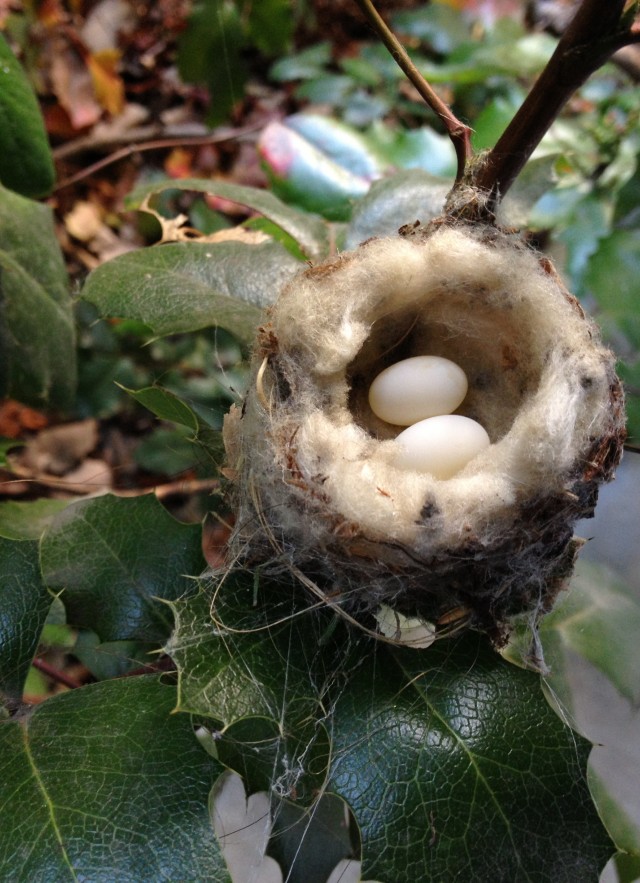
About this time of year, families across the nation are usually gearing up for egg hunts. From secular events that emphasize the beginning of spring and baby animals, to more religious Easter egg hunts, they are something that we can’t take part in this year.
With the coronavirus pandemic keeping us “safer at home,” it isn’t wise to engage in a group egg hunt this year. However, here in the Greater L.A. area, we are encouraging people to explore in their own homes and yards and go on a wild egg hunt—for science—and share what you find online! Whether you’re housebound, yardbound, or out for your daily exercise walk in your neighborhood, here are some safe ways to sleuth for eggs. Staying inside is the safest option for many, but this doesn’t mean we can’t hunt for eggs. Here is a hummingbird nest and egg that our Community Science Manager Miguel Ordenaña snapped photos of.
He didn’t want to disturb the nesting bird—it is in fact illegal to do so—so he took the pictures through his window:
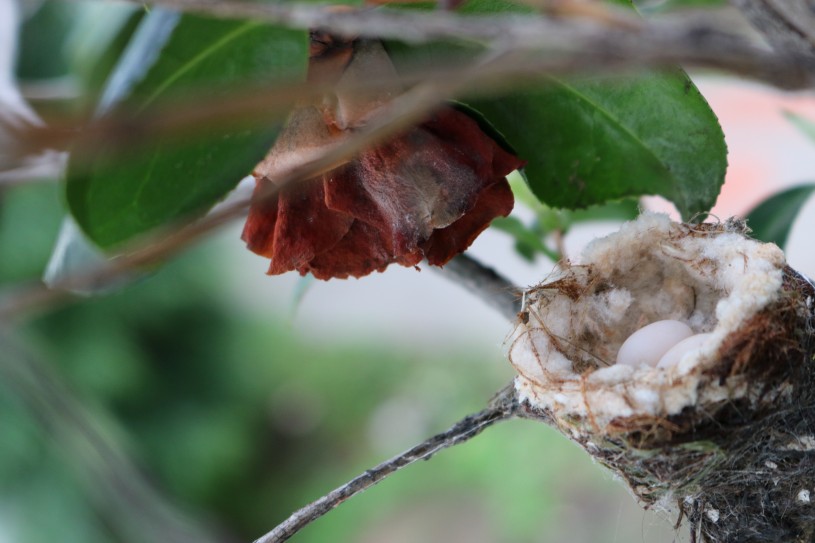
Here is a spider egg case I found in my parent’s garage (I temporarily moved back home during the quarantine). Pro-tips: Use a flashlight to help get good lighting when using a camera phone. If you have a magnifier clip for your phone, use it, if you don’t try taking pictures of microscopic creatures through a magnifying lens.
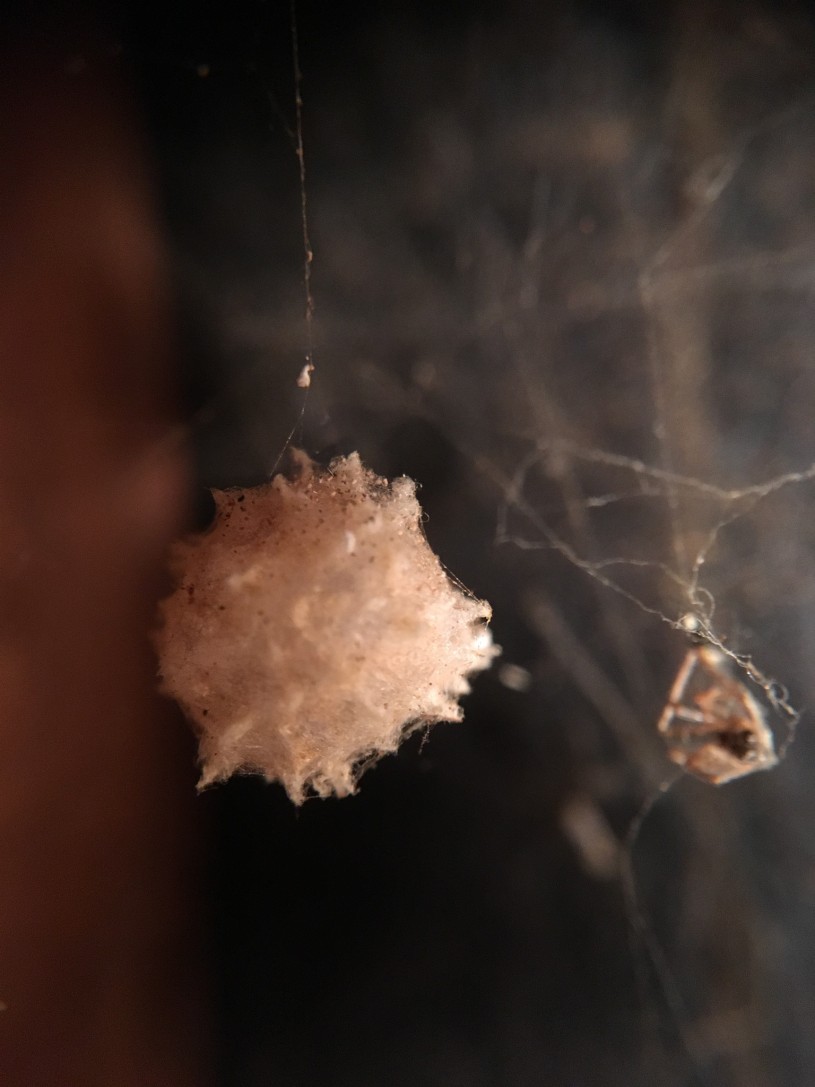
If you have a balcony with plants on it, you can also try looking on plants for insect eggs, or seeds. Here are some insect eggs that Amy from the Community Science office found on plants earlier this year.
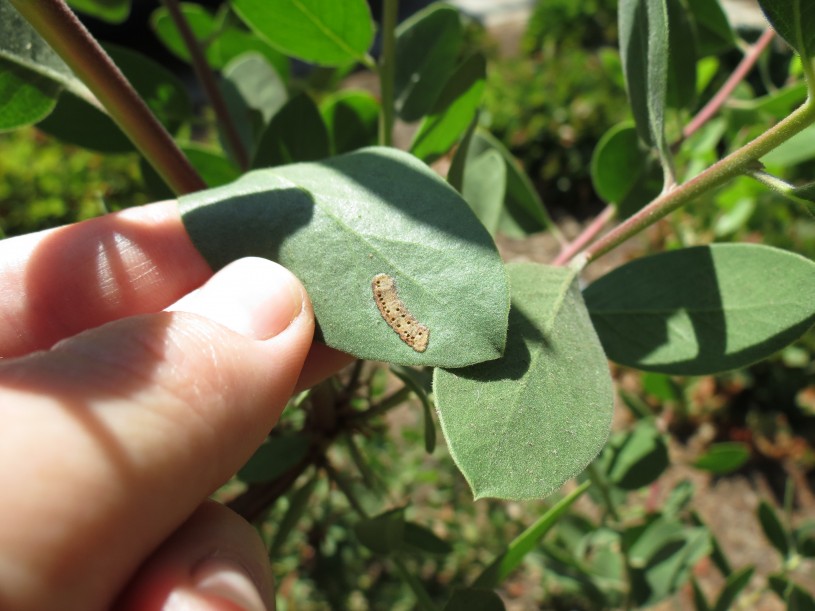
If you have a back or front yard, they are also safe places to explore during these times. Remember to look up (along the eaves of your house or in trees), look down (in the undergrowth and under patio furniture), and you can even turn things over (under rocks and the lids of irrigation boxes) as long as you put them back where you found them. Always remember to keep yourself and wildlife safe—don’t put your hands where your eyes can’t see, and be sure to return items you move back how they were so animal homes aren’t disturbed.
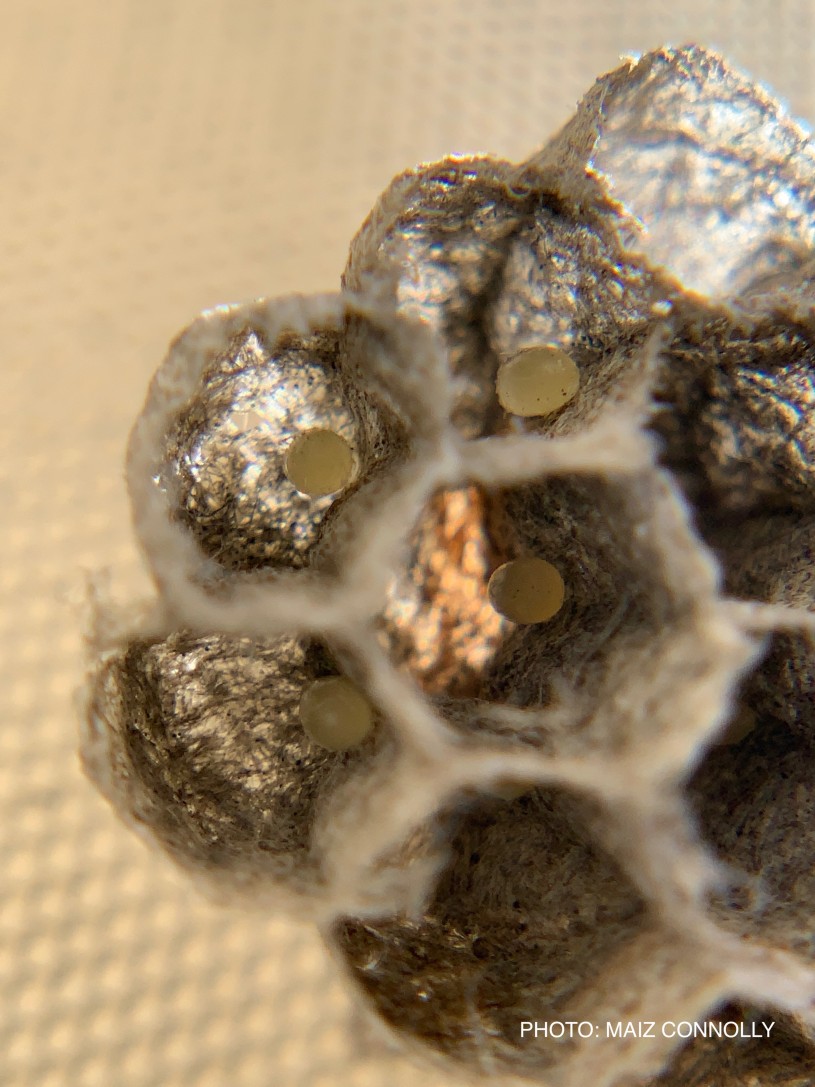
Ever found a paper wasp nest in your backyard? This is exactly what happened to NHM staffer Maiz Connolly as she popped up her patio umbrella recently. She found an abandoned paper wasp nest, and when she took photos of it, she found some tiny wasp eggs inside.
One of the most commonly found backyard animals is the ladybug. Here is a spotless ladybug eating a ladybug egg! Cannibalism in the insect world is not that uncommon.
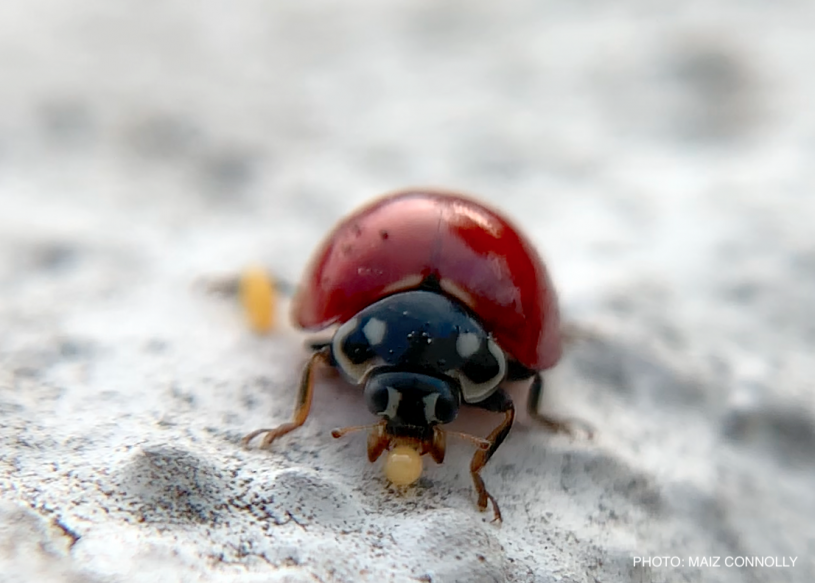
Lastly, we’re all still allowed to head out for exercise in our own neighborhoods. As long as we’re practicing social distancing (6-feet distance from people outside of your immediate household), wearing a cloth face mask, and of course washing your hands when you return, it is still safe to snap a few pictures of eggs you find on your walk.
Some eggs aren’t eggs at all! This tiny “nest” with miniature “eggs” is actually a bird’s nest fungus. The “eggs” contain the spores, and when a droplet of water falls into the nest, it helps to release the spores for reproduction.
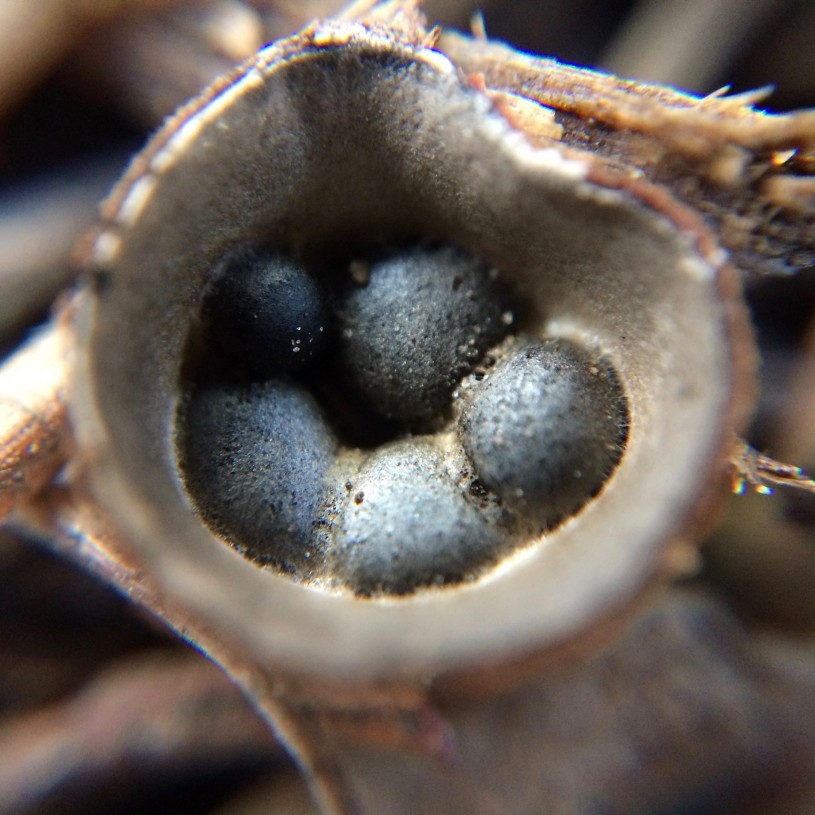
Now that you’ve got some tips for safely taking part in our L.A. Egg Hunt, here are instructions for sharing them with our scientists.
- Keep yourself and wildlife safe. Follow your local city and county governments directives regarding COVID-19. Do not disturb wildlife, particularly wildlife you find on a nest or in the process of laying eggs. Remember it is illegal to disturb birds during nesting season.
- Take pictures of the eggs, nests, seeds you find.
- Get the free iNaturalist app and join the LA Egg Hunt project
- Upload your pictures to iNaturalist and add them to the L.A. Egg Hunt project
- Share what you find on social media using #natureinLA and #LAegghunt
During these difficult times, we know that nature can be very healing. What better way to feel the healing powers of nature than celebrating the beginnings of new life while making a valuable contribution to science?